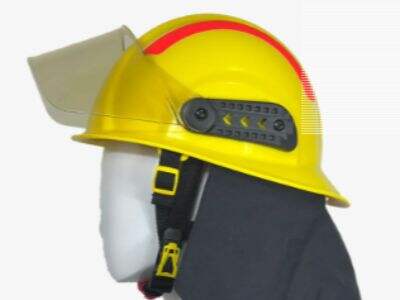They put on special helmets to protect their heads when they hurry inside burning buildings to rescue people and extinguish flames. These helmets are known as structural fire helmets. The clothes are made of robust materials to ensure the firefighters in the line of duty are protected and are comfortable while they do their job.
How structural fire helmets protect firefighters
Structural fire helmets are designed to withstand extreme heat and heavy blows. They’re typically made out of durable plastic or other materials that won’t easily melt or catch fire. Those materials also make the Firefighter Helmet light and easy to wear for the long, grueling hours firefighters are on the job.
From the inside of the helmet, there is a special lining for absorbing impact in case the fireman trips or something strikes their head. The lining consists of soft foam or gel that contours to the head of the firefighter.
Structural Fire Helmets: Comfort Features
Firefighters frequently wear their helmets for long hours, so they must be comfortable. Structural fire helmets come with adjustable straps and soft padding that can be replaced to conform to the head of any firefighter. This prevents the fireman helmets from wobbling while they work.
The helmets come with holes for air and materials that pull sweat away, helping keep a firefighter’s head cool and dry, even in hot and smoky places. This prevents them from overheating while in action.
Pitfalls Visibility and Safety Features
It is critical for firefighters to see well when working in dark and smoky buildings. Structural fire fireman helmet are brightly colored and also include reflective strips so that they are more visible to firefighters in low light. Some have lights or shields that drop to cover their eyes.
The helmets also have clear face shields or goggles in heat-resistant materials that won’t fog. This allows firefighters to see in all kinds of conditions, from smoky rooms to blinding sunlight.
Integration of Communication and Equipment
In emergencies, firefighters need to communicate with one another and their leaders. Structural fire helmets have dedicated locations where communication devices can be attached, such as a radio and an earpiece. It also allows firefighters to share data and collaborate more effectively.
The helmets also designed for compatibility with other fire fighting equipment, such as breathing masks and protective suits. They are designed with internal hooks and straps to keep a fireman’s gear securely stored, so firefighters can walk freely and safely.
Helmets: Testing and Safety Standards
It typically takes many trials, accidents and annoyances before getting structural fire helmets into the hands of the firefighters who will use them. There are strict rules about making helmets enforced by groups like the National Fire Protection Association (NFPA) and the Occupational Safety and Health Administration (OSHA).
Included in these rules are tests of ambient resistance helmets to impacts, heat, visibility and communication. Helmets that pass those tests receive certifications stating they are reliable and suitable for actual firefighting conditions.

 EN
EN
 AR
AR
 HI
HI
 JA
JA
 KO
KO
 NO
NO
 RU
RU
 CA
CA
 TL
TL
 IW
IW
 ID
ID
 SR
SR
 UK
UK
 VI
VI
 SQ
SQ
 GL
GL
 MT
MT
 TH
TH
 TR
TR
 FA
FA
 AF
AF
 MS
MS
 SW
SW
 CY
CY
 IS
IS
 MK
MK
 HY
HY
 AZ
AZ
 EU
EU
 KA
KA
 HT
HT
 UR
UR
 BN
BN
 LA
LA
 MN
MN
 NE
NE
 SO
SO
 MY
MY
 KK
KK
 UZ
UZ



